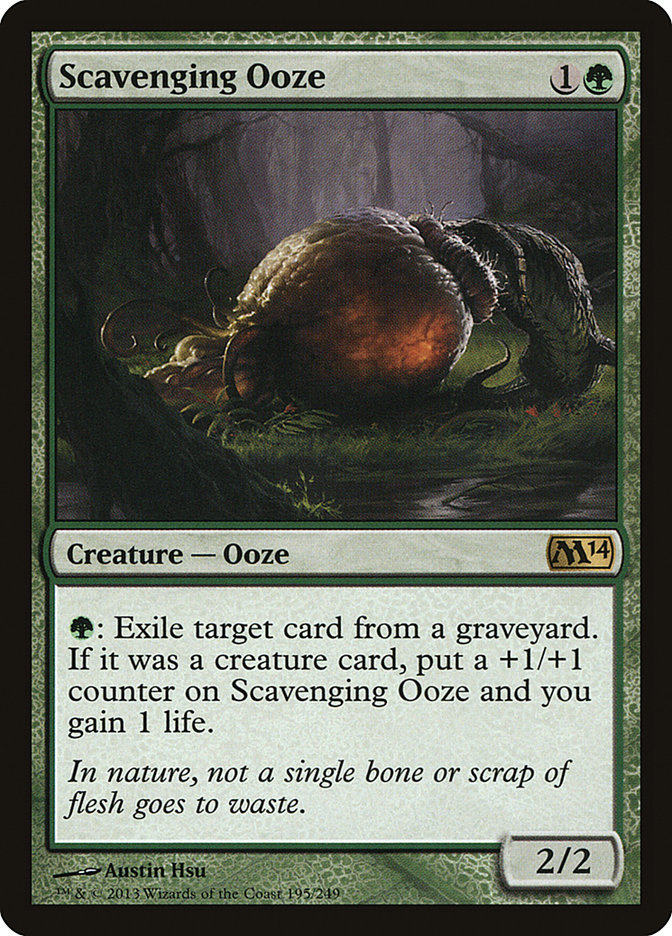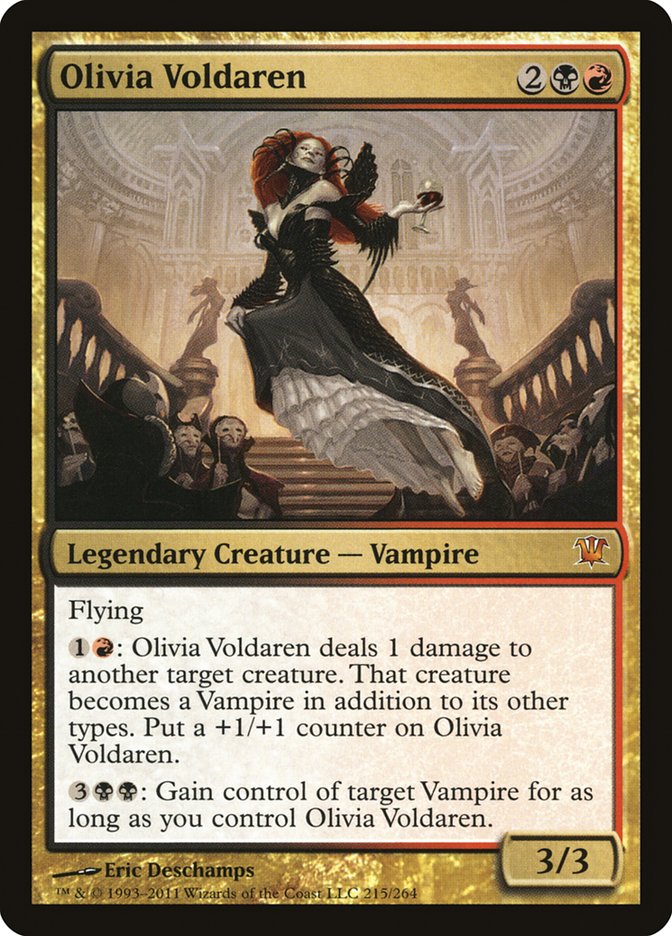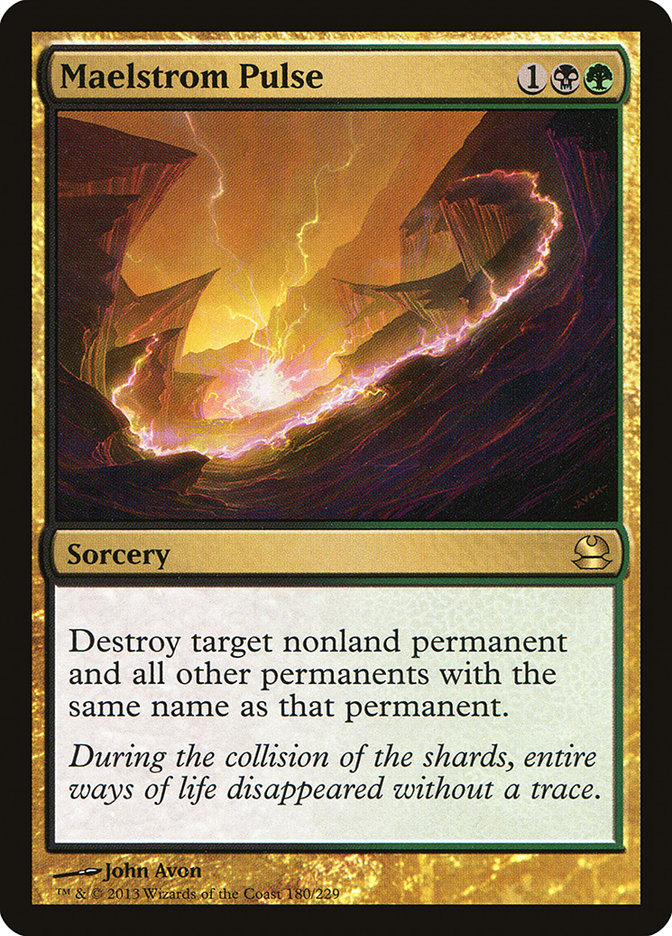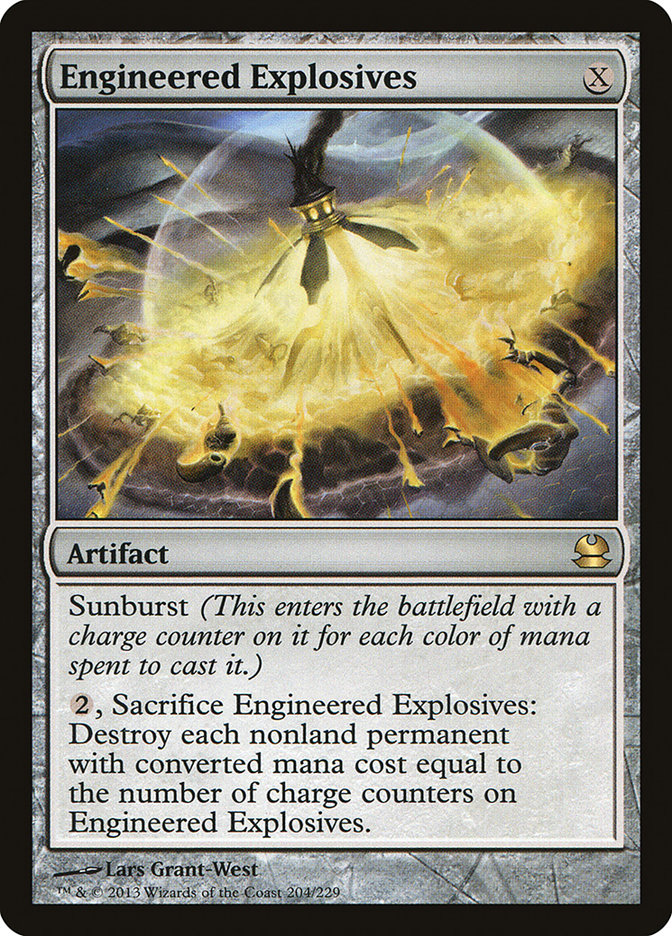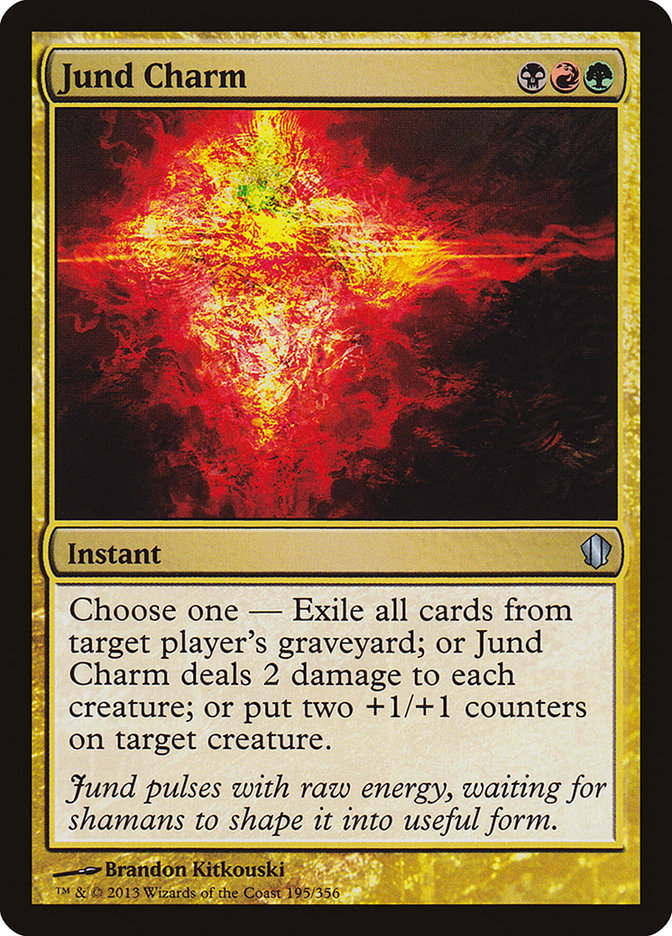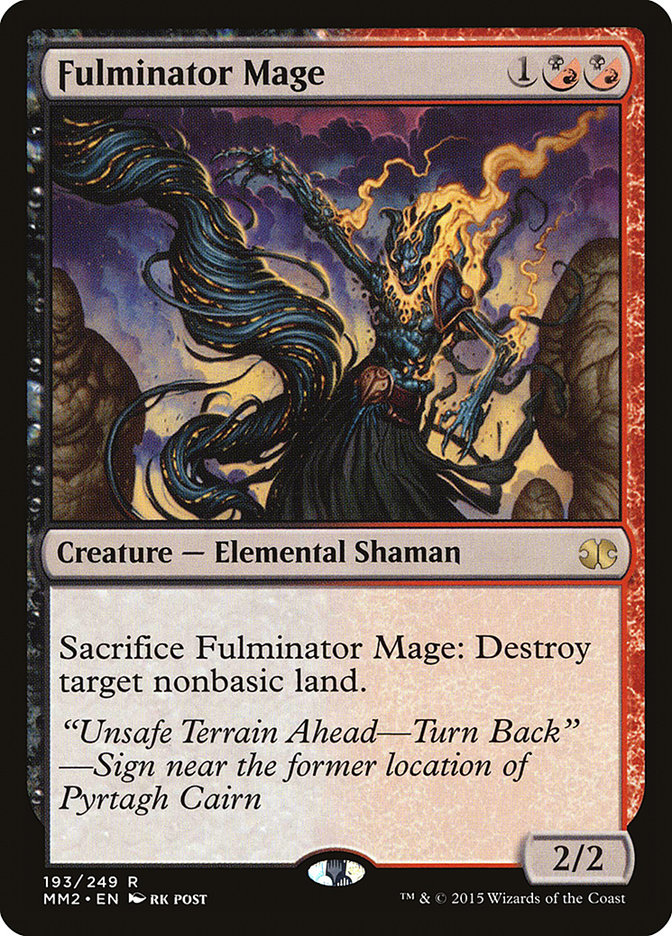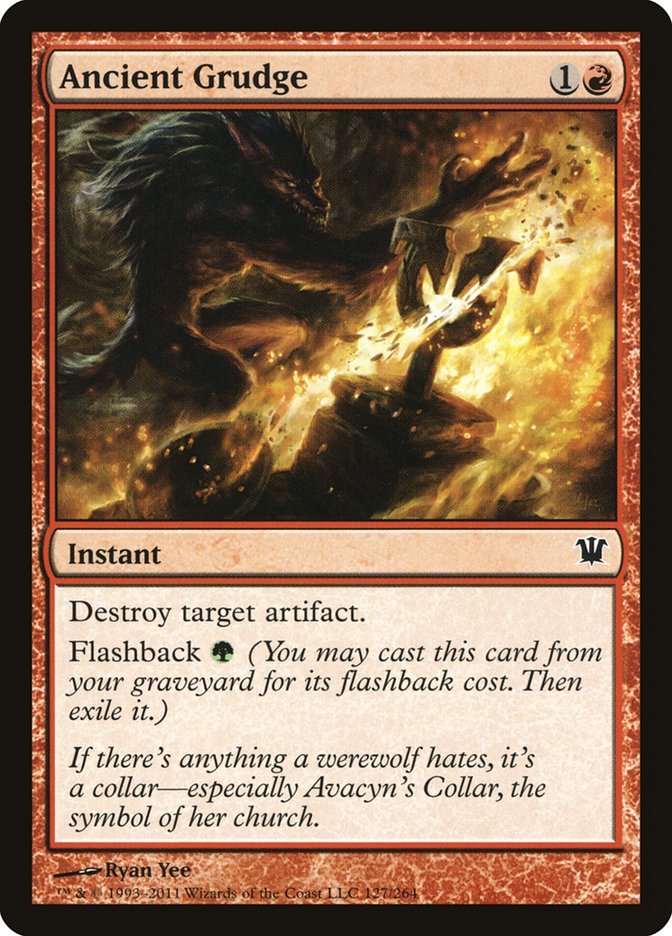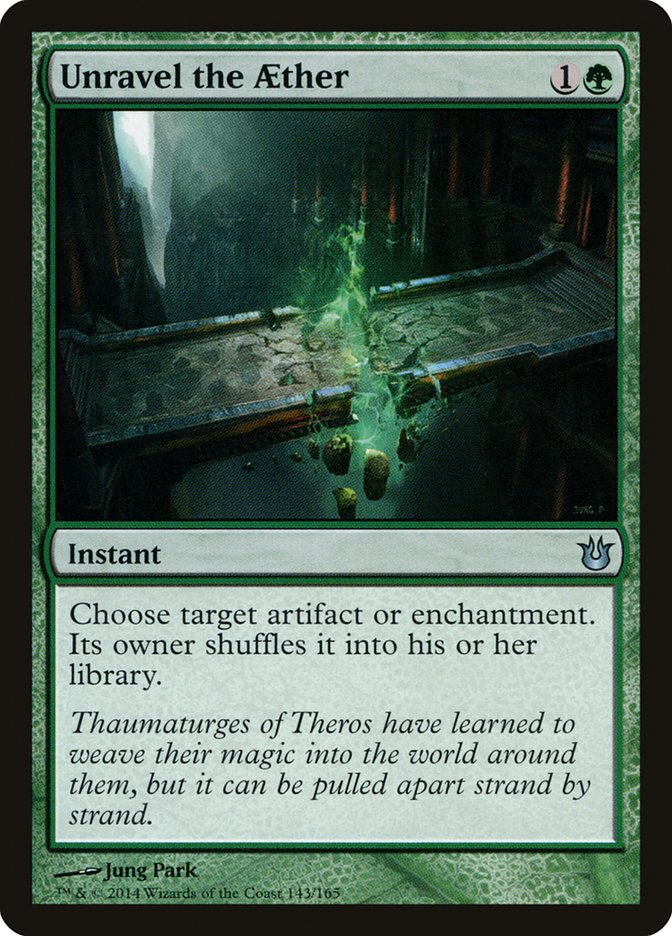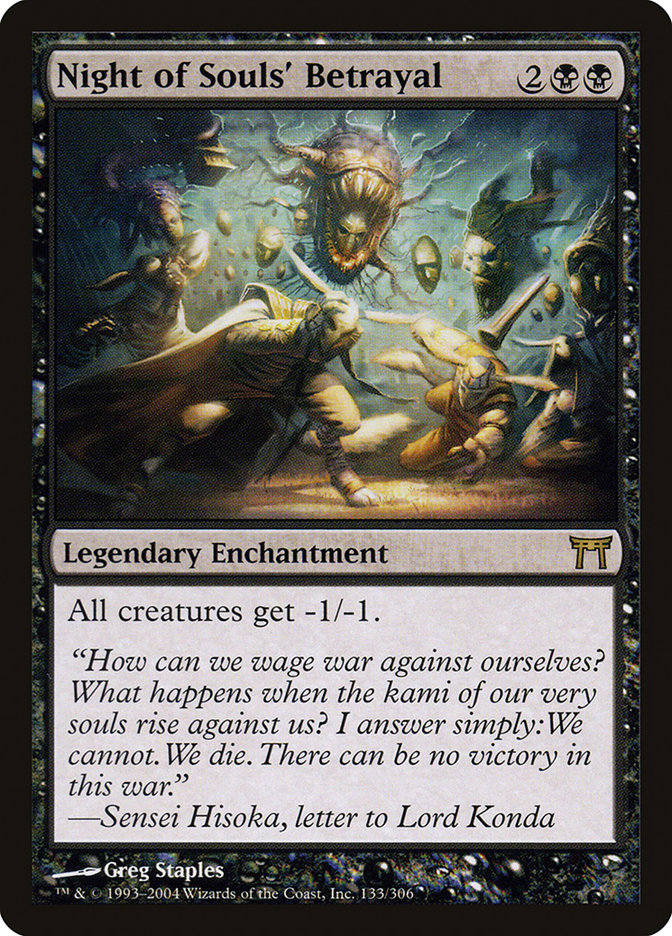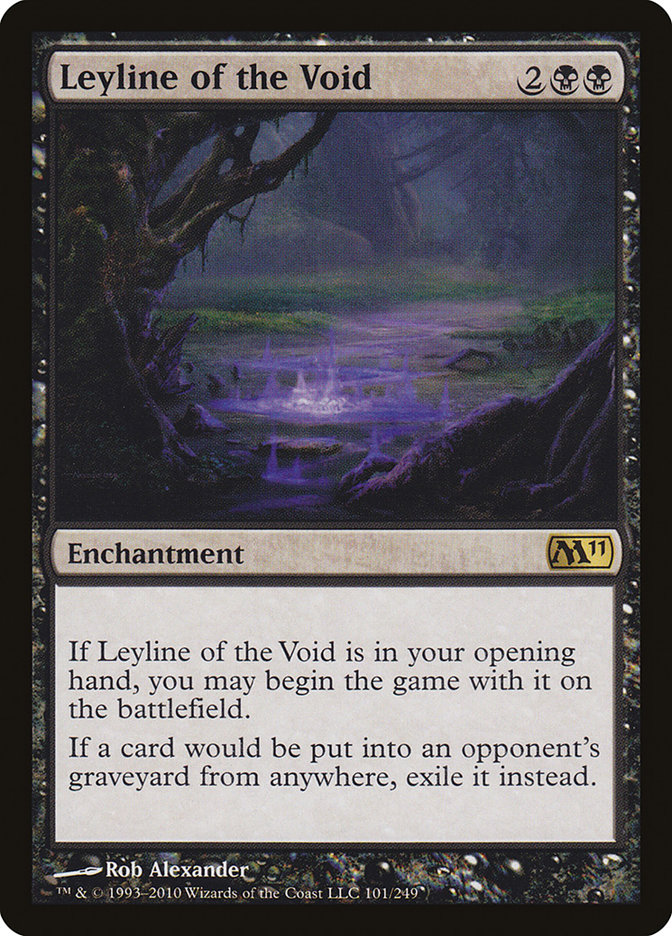With the Season Two Invitational and Grand Charlotte on the horizon, I’ve been playing a lot of Modern. My deck of choice has been Jund, and I don’t think
my choice should be close. After a string of mediocre PPTQ performances in Standard, I finally won an 80 person PPTQ with Jund without losing a match.
Jund and I just click.
What Are We Doing Here?
I treat Jund like a midrange deck that is slanted a little on the aggressive side. Given the opportunity, I will take an aggressive stance. Discard,
Lightning Bolt, Dark Confidant, and manlands like Treetop Village and Raging Ravine allow you to get ahead early and turn the corner in the midgame. Jund
has a low mana curve and some of the most efficient cards in the format.
Some people might try to go a little bigger with Jund and play cards like Kitchen Finks, Huntmaster of the Fells, or Courser of Kruphix, but that’s not
what I’m trying to do. If you’re grinding people out, it’s because Tarmogoyf is difficult to deal with, Dark Confidant gives you raw cards, Liliana of the
Veil eats all their resources, or because Kolaghan’s Command is broken. Nickel and diming them is the exact opposite of what I’m trying to do.
Why Jund Over Abzan?
In short, Lightning Bolt is a better early removal spell than Path to Exile. Jund also has a lower mana curve, a better manabase, and some powerful
sideboard options that Abzan doesn’t have access to. Of course, that runs both ways since Jund doesn’t have access to Abzan’s powerful white sideboard
cards.
The lower curve means that Dark Confidant is at its best, but that might not be enough on its own. A while ago, the U/R Splinter Twin decks were far more
aggressive after sideboard and also had things like Electrolyze en masse. Burn was also one of the most popular decks in the format. Neither of those is
the case anymore, and Dark Confidant is quite good against nearly every other deck in the format. If there’s a good deck that can play Dark Confidant, it
has my attention.
Dark Confidant allows you to run away with the game in numerous situations, and that’s definitely what I’m interested in when playing Modern.
Abzan has powerful cards like Lingering Souls that give them slight edges in the mirror, against control decks, and against Affinity, but those are edges
you don’t necessarily need. Additionally, Siege Rhino is a four mana card in a format where decks tend to kill you around that time. When given a choice
between the more powerful, clunky deck and the smooth, slightly less powerful deck, I’ll choose the smooth deck every time.
Call it a character flaw.
The Threats
These are the creatures that you’ll use to win games, although Treetop Village and Raging Ravine certainly help. Liliana of the Veil often translates into
a game win by destroying your opponent’s board. Those cards do their jobs well, but what I really like about Jund is that its threats tend to play multiple
roles.
Tarmogoyf is the biggest road block in the format, Scavenging Ooze is similar given enough time (plus it gains you life), and Tasigur, the Golden Fang is
an engine that only asks that you trade cards with your opponents. Grim Lavamancer and Olivia Voldaren both kill your opponent but also control the board.
Ultimately, Dark Confidant is the only creature that doesn’t play defense very well, and that’s what leads to it being sided out a fair amount. The flip
side is that Dark Confidant is so unbelievably powerful that you play four regardless. If you untap with it, you get far ahead very quickly, so it’s worth
trying to make it happen.
Is playing Dark Confidant and Tasigur, the Golden Fang in the same deck just asking for trouble? I don’t think so. Obviously you’re running a sizeable
gambit by playing them both, but in what situation will it actually come up that it will punish you?
If you have Dark Confidant in play and have not blocked with it, it’s unlikely that your life total is under immense pressure. If that were the case, it’s
probably because you’ve had Dark Confidant active for numerous turns. If that’s the case, you are probably flush with cards, so you should consider killing
your own Dark Confidant to play around the only way you can lose.
Getting the most out of your Dark Confidants can be tricky sometimes, but it often involves just not being as reckless as you normally would be. Against a
combo deck, it’s not a freeroll to play a fetchland into a shockland into a Thoughtseize. Your life total is still a resource, and that resource might
translate into cards from Dark Confidant further down the line, assuming you have any life points left to spare. If you don’t absolutely have to fetch a
shockland, you probably shouldn’t be.
If you have multiple Tasigur, the Golden Fangs in your deck after sideboard alongside all the Dark Confidants, it’s probably because you want additional
threats. If that’s the case, then flipping a Tasigur, the Golden Fang to Dark Confidant probably means you’re winning. Against anything else, the two
probably won’t be in your deck together after sideboard anyway.
Tasigur, the Golden Fang isn’t integral to your strategy, but it is one of the best cards in the format. There are no sacred cows, so you are allowed to
cut, but I would recommend against it.
The Answers
Tasigur, the Golden Fang is easily the biggest new card to worry about. Because that guy exists (and to a lesser extent, Gurmag Angler), you can’t exactly
load up on Abrupt Decays. Lightning Bolt is already covering you against smaller creatures, so you need the rest of the removal to clean up the big guns.
Terminate is excellent, but the mana isn’t good enough to play all four — I’ve tried. Maelstrom Pulse steps in to give you an answer to basically
anything. Liliana of the Veil does a fine job at killing bigger creatures if you manage to clear away their small stuff.
Kolaghan’s Command is a big deal. It looks innocuous because none of the cards (Shock, Raise Dead, Raven’s Crime, and Shatter) are all that great. However,
staple two of them onto one card at instant speed, and you a card that contains a ton of utility. It gives you a way to grind out other people, it gives
you maindeck Affinity hate, and it can even function as the occasional Time Walk plus additional value when you make them discard their only card during
their draw step.
While Kolaghan’s Command breathes new life into Jund, I can safely say that without Liliana of the Veil, Jund in its current form could not exist. MOCS
competitor Daryl Ayers said that Liliana of the Veil is very similar to casting a Brainstorm. It allows you to cash in your less than useful resources and
ultimately tie everything together. A truly horrendous draw with Liliana of the Veil is very much winnable, and the same can’t be said for any other card
in the deck.
The Decklist
Creatures (12)
Planeswalkers (5)
Lands (25)
Spells (18)

This is where I’m at right now, but I wouldn’t be surprised if the deck I registered for the Season Two Invitational in three days changed fifteen cards.
I’m still tinkering with the threat base, the removal suite, the discard suite, the manabase, and the sideboard.
Basically, I’m constantly working on the entire deck. Since there are so many options that do similar things, I’m not sure I’ll ever figure out a decklist
that feels perfect. You just have to go with your style and try to beat the decks you expect. Jund is one of the most customizable decks I’ve ever seen, so
I would never assume a decklist is ever “correct.” The best you can do is get to a place where you feel comfortable.
Why Are Your Numbers So Weird?
I think you can infer a lot from the numbers on my decklists. My numbers are generally not chosen at random. If I’m trying out a card, I might play it as a
one-of, but if I’m advising people to play a deck in a tournament, it probably won’t contain any “fun-ofs.”
The four-ofs: I think these cards are great and wouldn’t mind drawing multiples per game. These are typically the most powerful and/or most efficient
cards, and I would probably play more than four if I were allowed.
In the case of threats, removal, and discard, I have more than four copies of each, and while they are technically different cards, they accomplish largely
the same purpose.
The three-ofs: There are varying reasons why I would be willing to play a three-of of a certain card, but would be apprehensive about playing it as a
four-of. Perhaps I definitely want to see one per game, but I want to mitigate the risk of drawing multiple copies, such as with Leyline of the Void.
Leylines are pretty bad in multiples, and while something like Terminate would be great to draw multiples of, I don’t think the manabase can necessarily
afford it.
There might be different reasons why I don’t think I could afford to play four Terminates or four Leyline of the Voids, but they’re all three-ofs because
of the same logic.
The one-ofs: This is probably a card I’m fine drawing one copy per game, but don’t want to be flooded on copies. Sometimes a card is integral to your
gameplan at some point, so even though you’d prefer to draw only one copy, you have to take the risk of playing two copies to ensure you can find it in
time. Cruel Ultimatum and Upheaval are good examples.
If it’s not integral, you’re probably better off playing only one copy. Be aware that multiple one-ofs kind of function like copies of others in that you’d
prefer to only draw one one-of per game. For example, drawing a Maelstrom Pulse and Chandra, Pyromaster in your opening might make your hand too clunky,
which is about the same as playing two copies of Chandra, Pyromaster and drawing them both at the same time.
The two-ofs: These are cards that I would also consider playing only one of, but where drawing two copies isn’t the end of the world, and drawing two
copies might actually be great in certain matchups.
Again, you need to be careful with how many clunky cards you play, as you might draw an opening hand with a bunch of different three-drops and want to
mulligan. Then again, Jund is a deck that sometimes has to grind, so having some number of powerful, clunky cards is necessary at times. Overall, it’s just
a huge risk/reward situation.
It should be noted that whether a card is a one-of, two-of, three-of, or four-of, it’s probably based on my intuition and instinct rather than some
rigorous testing process. However, testing backs my intuition more often than not.
The Manabase
Building three-color manabases isn’t easy. We have a bevy of great dual lands to choose from in addition to the fetchland/shockland interaction that Modern
is famous for. At the end of the day, we have a wealth of options, so we just need to figure out what we need and go from there.
The first thing to note is that I want 24 or 25 lands and some that have additional utility besides fixing our colors. We need some insurance against
flooding and, even with “only” 24 land, we should be able to design a manabase that can provide us the colors we need the vast majority of the time. At
that point, we probably have a slot or two to devote to lands like Ghost Quarter that are essentially freerolls.
By that, I mean in nearly every scenario that Ghost Quarter that would otherwise be some sort of dual land isn’t going to provide us any utility. We will
have our color requirements met but might still need an additional land or two to pay for colorless costs in our cards. That means we can afford to play
some lands that don’t actually fix our mana at nearly no cost to our consistency.
With 24 land, I think that means we can support one freeroll land, and two if we have 25 land. If we have 25 land, we can probably afford an additional
enters-the-battlefield-tapped land and not be seriously hindered by it. We should have enough lands in our hand that we will have plenty of options for the
order we sequence our lands and the ETB tapped land won’t slow us down.
That leads me to believe that with 24 land, we can play one Ghost Quarter and three manlands, or two Ghost Quarters and four manlands with 25 land. By
adding a land, we get to play an additional utility land, so I think it’s worth it overall, especially since the additional Ghost Quarter can potentially
be sideboarded out in a matchup where you neither need the colorless mana or the utility, such as against Burn.
The second thing to note is that I have absolutely zero issues with cutting down on extraneous lands. In this case, I’m referring to the
fetchland/shockland portion of my manabase. Most players use multiple Overgrown Tombs and include one of each basic land just because they can, but that is
absolutely wrong.
In what situation do you find yourself needing the second Overgrown Tomb? If it’s not absolutely necessary, get rid of it because naturally drawing a
shockland isn’t very good. In place of any extra shocklands or extraneous basic land, I’d rather have additional fetchlands! At least then I’ll have the
choice of what color or colors my land makes, all at a low cost.
In hundreds of games with Jund, I’ve rarely found myself wishing I had a basic Mountain to fetch for. Blackcleave Cliffs is arguably the best dual land in
the deck and certainly one of the draws to Jund, and most of your lands make red mana already. Basic Mountain is effectively a colorless land the vast
majority of the time, so I’d rather have a Ghost Quarter instead of it.
I definitely think you want at least a basic Forest and at least a basic Swamp to fetch for, both against Burn and Blood Moon decks. The second basic Swamp
also gets the nod because sometimes you want to fetch a fifth land untapped that doesn’t deal you an additional two damage. It also allows you to fetch
into Inquisition of Kozilek, Tarmogoyf, and Liliana of the Veil against Burn without ever taking the additional two points of damage from a shockland.
There are considerations against Path to Exile and opposing Ghost Quarters as well. As long as your opponent is going to be casting those against you, you
don’t ever want to miss a chance to get value. Sometimes the extra land will be completely irrelevant, but thinning your deck of the extra card for free
could be valuable. You have no way of knowing, but it’s always better to get the free card than not. You shouldn’t jump through hoops in order to make sure
their third Path to Exile will give you a land, but if it’s convenient, it’s worth watching out for.
So, with four Blackcleave Cliffs, four manlands, two Ghost Quarters, three shocklands, and three basics, that brings us to sixteen total lands. Twilight
Mire wants to fit somewhere because you have Scavenging Ooze and Liliana of the Veil in the deck, both of which are mana hungry and require specific
colors. One is basically a freeroll, but playing two is when you start running into issues with Ghost Quarter, multiple Twilight Mires, and Terminate. If
we play one, that means we can fill out the rest of the deck with fetchlands.
Four Verdant Catacombs is a given, but how many Bloodstained Mires and Wooded Foothills do we want? I think it’s more likely we fetch basic Swamp because
of the Turn 1 discard and Turn 3 Liliana of the Veil, but we also want to find Forest against Blood Moon because the easiest way to beat a resolved Blood
Moon is just attacking them with Tarmogoyf. I think fetching basic Swamp wins out, so I have three Bloodstained Mires and one Wooded Foothills, but I could
see it either way.
Building A Sideboard
Doesn’t Jund just lose to G/W Hexproof, Burn, Affinity, Abzan, G/R Tron, and a slew of other decks? Well, yes and no.
Ultimately, you can build your Jund deck to be favored against any deck in Modern. The issue is that you can’t beat all of them at the same time. The trick
is to ignore some matchups that you don’t think will be popular while also bolstering your matchups against the popular decks.
In this case, Burn, Affinity, and G/W Hexproof have been trending downward. G/R Tron appears to be trending upward because of Jund’s place in the metagame,
but I also feel like Burn could make a comeback as well. People are dropping their Feed the Clans, and Grixis Delver basically has nothing that would make
Burn a good matchup, so it is probably time for Burn to make a comeback.
If I had to guess which two decks will be the most popular of Jund’s bad matchups, I would definitely say Burn and G/R Tron. You should probably be ready
for those decks.
There are two schools for building sideboards for Jund, and which style is better basically depends on where the format is.
1) The first style of building a Jund sideboard is to have multiple things you can bring in for each matchup, allowing you to make small upgrades across
the board. After sideboard, your deck should have few, if any, cards that you truly don’t want to draw in the matchup.
This style is fine if you want to gain marginal percentage points across a wide open format. However, when it comes to crunch time, there are matchups like
G/R Tron and Burn where increasing your win percentage by a small margin isn’t enough because you’re still a huge dog in the matchup.
2) The second school of thought is to try and jam a bunch of haymakers for the very tough matchups. That leaves you with some powerful options, but
ultimately you won’t have much to sideboard in for many matchups.
Some might build their sideboards to contain four Ancient Grudge, three Duress, four Feed the Clans, and four Leyline of the Voids, but that won’t
necessarily lead to good results. There will be plenty matchups where you end up with discard you don’t want, Dark Confidants you never want to cast, or
Liliana of the Veils that accomplish very little against their swarm of creatures. Still, a sideboard with two Sowing Salts, two Shatterstorms, two Feed
the Clans, etc might be effective.
One of the best reasons to play Jund is that you get to configure your sideboard in whatever way you want, and your sideboard cards can potentially
dramatically sway your matchups in your favor.
Here are some of the possible sideboard cards I could be playing that I’m not:
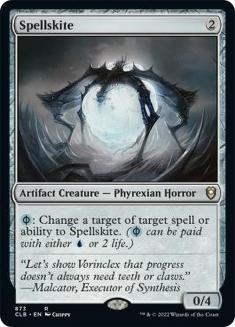
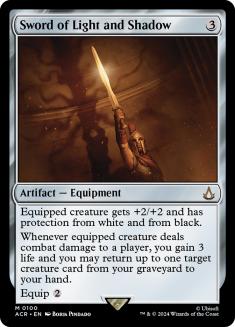
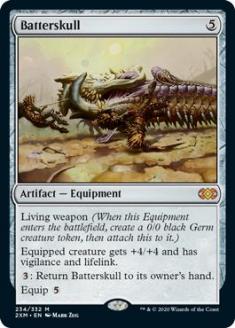
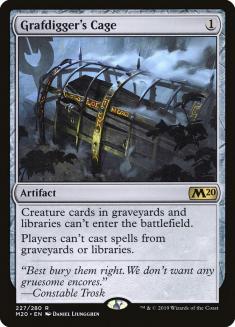
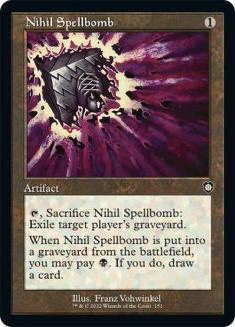
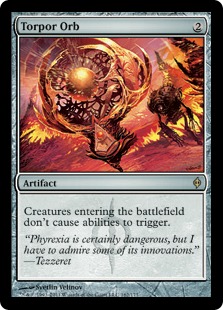
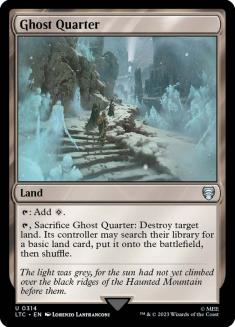
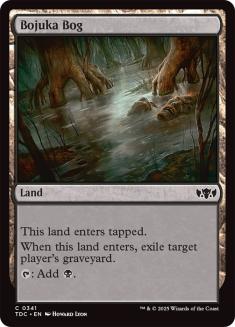
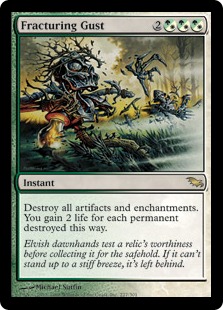
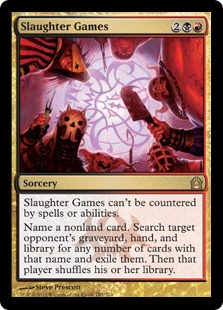

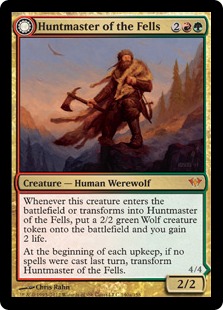
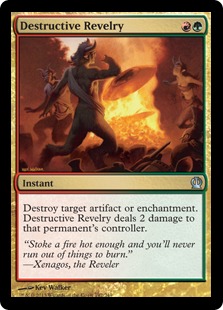
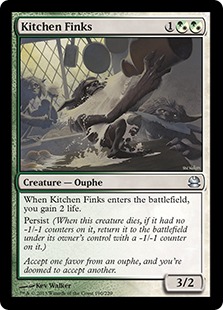
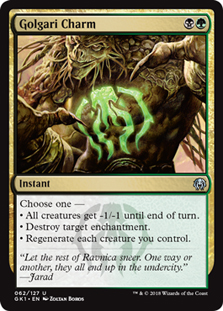
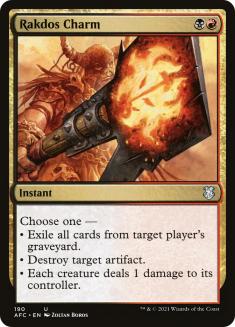
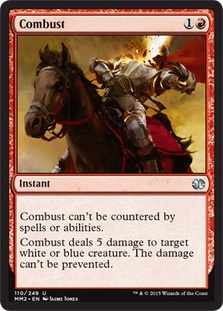
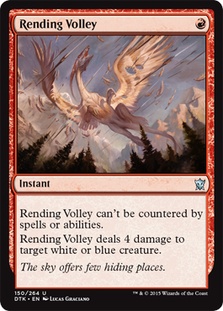
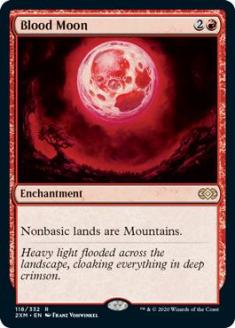

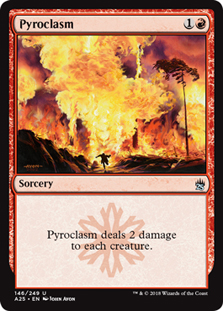
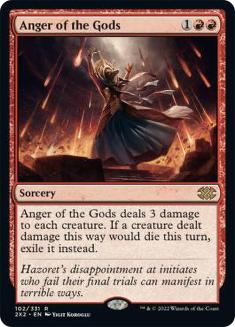
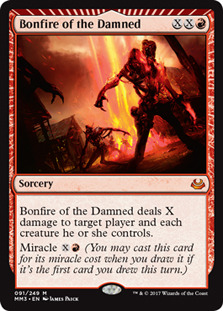
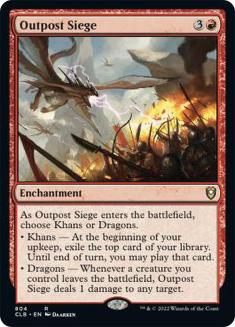

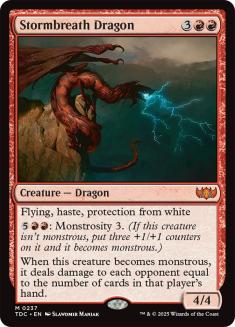
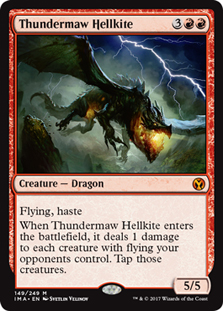
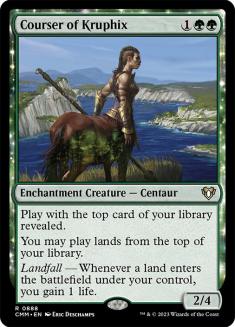
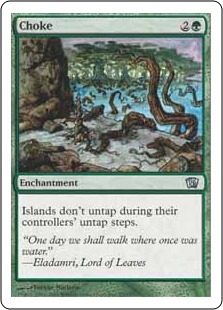
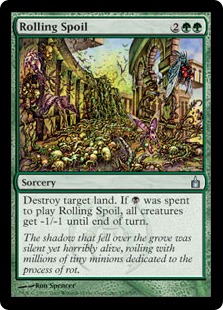
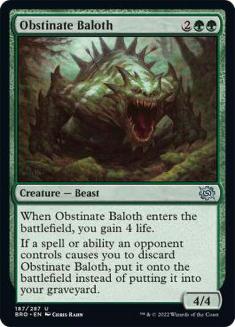


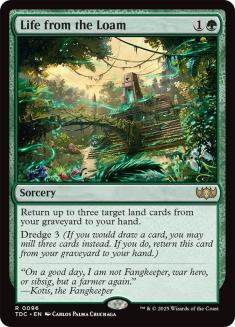

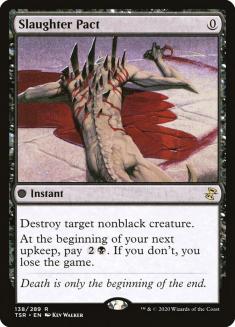
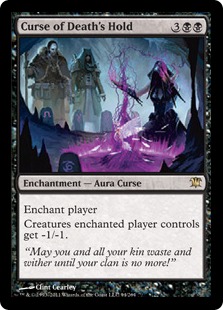
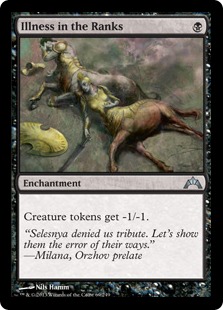
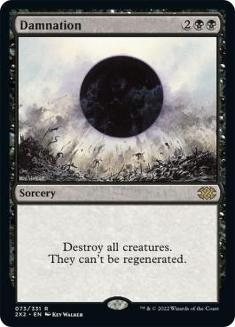
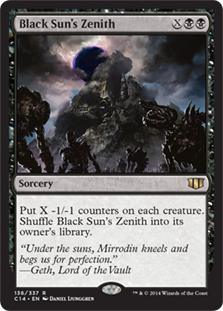
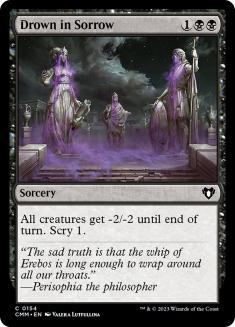
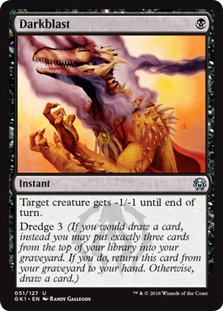
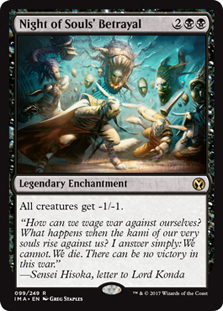
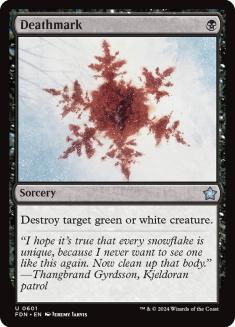
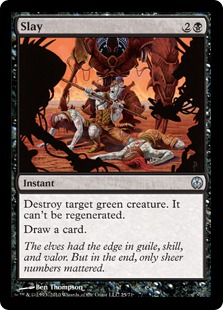


That’s plenty of reasonable options, and it’s probably just the tip of the iceberg.
There are also some cards that are maindeck playable that I’m not going to play, at least at the moment:
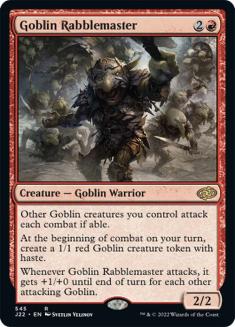
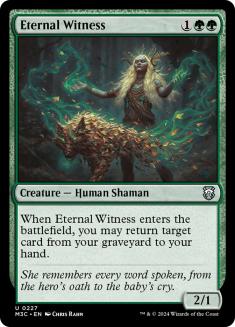
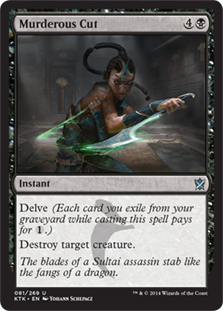
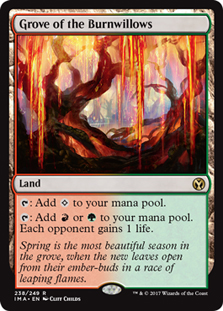

Goblin Rabblemaster is pure aggression, which isn’t what I’m in the market for. On the other hand, Eternal Witness is too grindy. Despite it being amazing
with Kolaghan’s Command, it’s also not what I’m interested in. Murderous Cut is nice, but I prefer Tasigur, the Golden Fang, and you can only afford to
play so many delve cards.
Grove of the Burnwillows is a fine land, but I don’t think it’s one you can afford to play. You want double black early for Liliana of the Veil, so you can
only afford to play so many lands that don’t produce black mana. As I mentioned in the manabase section, Twilight Mire is great for enabling Liliana of the
Veil early and often, but you can only play so many. With fewer Twilight Mires, the less G/R dual lands you can afford to play.
How To Sideboard
Sideboarding is more of an art than a science. Different people will play different cards, despite their archetype being the same, so you have to sideboard
based on the cards you see, not just blindly follow a map that might not take you to where you want to go. The cards you should want to bring in and the
cards you should want to bring out should vary game to game and opponent to opponent.
Boarding In
If I expect the game to go long and want another way to grind, or if I need another potential early beater, I turn to Tasigur, the Golden Fang.
Oliva Voldaren shines against midrange decks. Your early creatures will often draw out their removal spells, leaving a topdecked Olivia Voldaren in a prime
position to take over the game.
This is one of those flex slot cards that is decent at handling a bunch of problems but not great. Since I’ve cut down on Abrupt Decays, I feel like there
should be more answers to enchantments in the sideboard, but this also does a fine job at sweeping away the Spirits from Lingering Souls.
Jund Charm is yet another flex slot, capable of dealing with various creature swarms while also doubling as graveyard hate against decks like Storm. It can
also win a Tarmogoyf fight.
G/R Tron is a horrendous matchup, and this helps, but it’s not enough. Thankfully, this doubles as a card you can bring in against any deck with utility
lands when you have cards you’d rather replace, like Affinity or Jeskai Control.
Is this a worse Fulminator Mage? I don’t think so. If you were going to have multiple land destruction spells in your sideboard, would you want them to be
the same? Surely there is some value to be gained by dirtying them up, because no land destruction spell is strictly superior to another.
For example, if you curve Fulminator Mage into another land destruction spell, maybe you’d rather have it be a Sowing Salt than another Fulminator Mage.
Maybe the first Fulminator Mage is merely going to slow them down, while the second land destruction spell should be something more powerful.
In this case, I have a Boom//Bust instead of something like Sowing Salt, and that may or may not be correct. Similar to Sowing Salt, it’s much better to
curve Fulminator Mage into Boom//Bust (targeting my fetchland and your Tron land, sacrificing my fetchland in response) plus Tarmogoyf on Turn 4 than it
would be to just have two Fulminator Mages.
Boom//Bust is still a card I’d want to sideboard in against Jeskai Control, whereas Sowing Salt is not. I could also see something like Blood Moon in this
spot.
This is obviously Affinity hate, but there are some Aether Vial decks out there, and some people might still board in Batterskull against you.
Keranos, God of Storms is the card most Splinter Twin decks turn to after sideboard, so it’s nice to have an answer to it in your 75. This is also a
reasonable addition against Affinity, G/W Hexproof, and Wurmcoil Engine. If combo decks are bringing in Leyline of Sanctity, this is also a good card to
have.
Do you need another Terminate against Gurmag Angler? Maybe another sweeper against Lingering Souls? Perhaps an answer to a resolved Karn Liberated. Well,
Maelstrom Pulse is a little too clunky to play multiple copies of maindeck, but having another in the sideboard feels right to me.
Six discard is not enough to fight combo decks the majority of the time, and this discard spell doubles as hate against Burn.
I like this as a way to permanently lock out all Blinkmoth and Inkmoth Nexuses, Lingering Souls, and Infect.
This is the card I get asked about the most, but it’s by far my favorite part of the deck right now. Grixis Delver might be the deck to beat, and their
deck is completely anemic once you have a Leyline of the Void in play. Their main ways of beating you involve Snapcaster Mage or Tasigur, the Golden Fang,
and both of those cards are pretty useless against Leyline of the Void.
Some people have asked me why I don’t play a different graveyard hate card like Nihil Spellbomb or Grafdigger’s Cage, but those cards don’t solve the
issues. I can’t Nihil Spellbomb the Grixis deck every time it casts Thought Scour. Grafdigger’s Cage doesn’t do anything against Eternal Witness
shenanigans (although it does have the upside of bricking their Collected Companies), and it isn’t something I’d want to side in against a deck with just
Snapcaster Mage.
There are also decks like Dredge and Living End out there that Leyline of the Void is very good against. It’s great against two of the biggest decks and
doubles as splash damage against some fringe decks that are otherwise poor matchups.
Boarding Out
In grindy matchups or matchups where you can’t afford the life loss from Thoughtseize, some of these can come out. However, just because a deck is trying
to attack you doesn’t mean that you can’t afford the life loss from Thoughtseize. If you get to cast a Thoughtseize on Turn 1 against an aggressive deck
like Affinity or Merfolk, that two life will often save more than that in the long term. Against those decks, you really need early interaction, and if you
don’t have other options, Thoughtseize is more than fine.
It may seem odd to cut Tarmogoyf, but I really dislike them against Storm, Living End, and sometimes Affinity. If you’re not blocking on the ground and a
Tarmogoyf isn’t a fast enough clock, consider shaving some.
If your opponent isn’t using their graveyard or there won’t be any creatures to munch on, you should definitely cut Scavenging Ooze. Grizzly Bears isn’t
going to cut it.
I rarely touch this just because it’s such a cheap and versatile threat.
Similarly to Thoughtseize, Dark Confidant is actually reasonable against decks trying to attack you. I wouldn’t keep it in against Burn, but against
creature decks without ways to burn you out, Dark Confidant is a fine card to have on the play. Unfortunately, you might not have time to cast him when
you’re on the draw in those matchups.
Even if they are creatureless, this might be necessary to speed up your clock, especially against combo. Against G/R Tron, Lightning Bolt can take out a
Karn Liberated if they are ever foolish enough to -3 it the turn it enters the battlefield.
If your opponent is trying to go wide, it’s probably worth it to trim on Liliana of the Veil. There are some situations where an early Liliana of the Veil
on the play can be lights out against them regardless, plus there are some things like Etched Champion that you need Liliana of the Veil to deal with. If
they sideboard in a bunch of reactive cards, Liliana of the Veil gets much better.
If we’re not grinding and they don’t have artifacts, Kolaghan’s Command is probably not efficient enough.
The rest of the removal is kind of self-explanatory. If they don’t have good targets, you can freely side them out.
How To Approach The Mirror
There are some myths that have long been propagated. “You should always sideboard out your Force of Wills in Legacy blue mirrors because they are all about
card advantage” and “you should always sideboard out your discard in G/B/X mirrors because the games always go late and it comes down to topdecking” are
two examples.
The key word that turns those statements into myths is “always.” There is no “always” in Magic. It’s a game of variables, and those variable inevitably
cause the dynamics of various matchups to shift. That said, if I had a plan for the Jund mirror or Abzan pseudo-mirror, then I’d be extremely happy with
that. After all, nobody likes topdecking a Thoughtseize against an opponent with an empty hand.
However, the discard might be a necessary evil at this point. No other card can deal with Kolaghan’s Command, Siege Rhino, or a potential trump in the
matchup like Chandra, Pyromaster quite like Thoughtseize can. Additionally, Jund is a little more aggressive by nature, so if you get the chance to clear a
path for Dark Confidant, I would take it. If you had zero discard in your deck after sideboard, you would never have the opportunity to get those free
wins.
Conclusion
Modern is a crazy format with over twenty viable decks, so you can’t possibly prepare for them all. I like Jund because it makes me feel like I have a
chance in any matchup. If I run into something I haven’t prepared for, the combination of discard, removal, and efficient threats might be enough to beat
it even if I can’t effectively answer what they’re trying to do. Overall, I think it’s the best deck for me to be playing.





